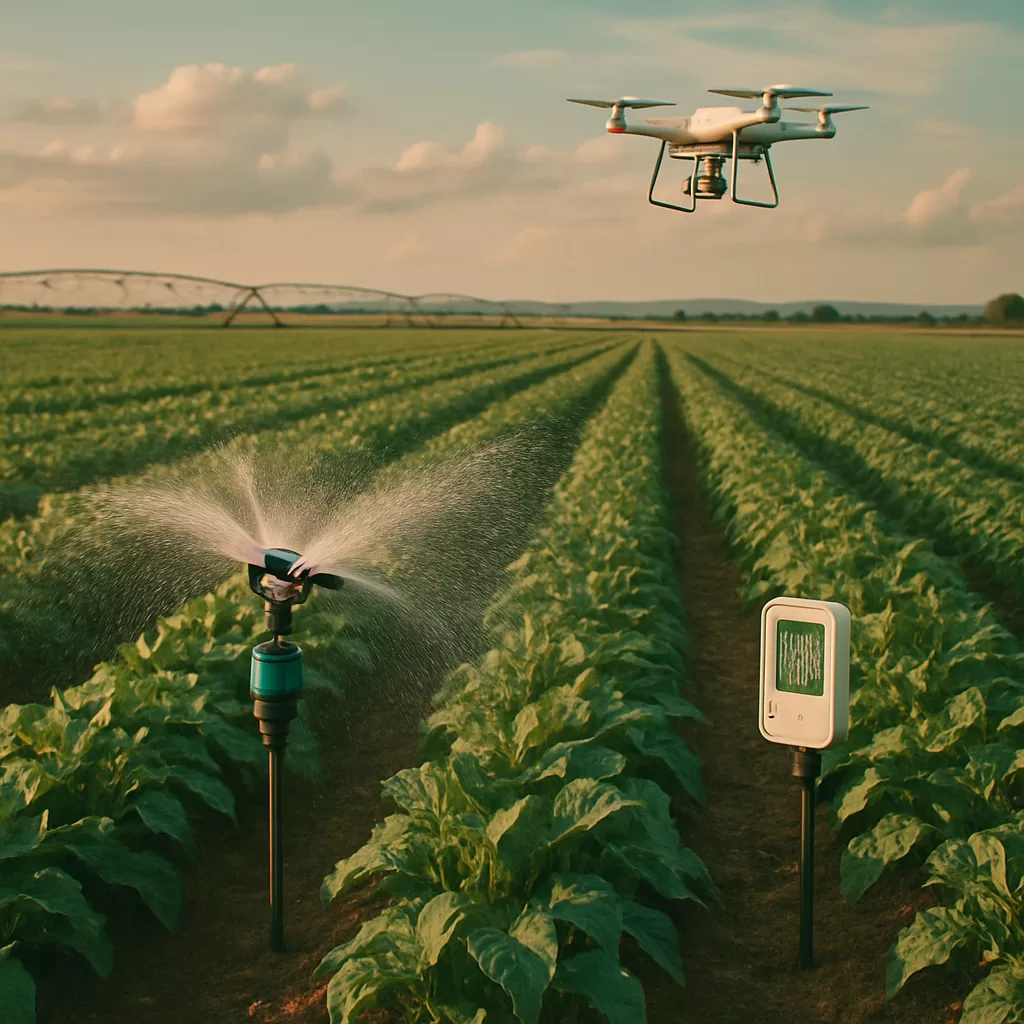Artificial Intelligence (AI) is revolutionizing agricultural practices, particularly in irrigation management. By integrating AI technologies, farmers can optimize water usage, enhance crop yields, and promote sustainable farming practices. This article explores the applications, benefits, challenges, and future prospects of AI in irrigation.
Applications of AI in Irrigation
Smart Sprinkler Systems
AI-driven sprinkler systems utilize sensors to monitor soil moisture and weather forecasts, activating irrigation only when necessary. For instance, the Rachio 3 Smart Sprinkler Controller connects to weather stations and adjusts watering schedules automatically, ensuring efficient water use. ([1])
Soil Moisture Sensors
These sensors communicate with AI systems to measure soil water content, enabling precise irrigation decisions. The Xiaomi Mi Flora Sensor, for example, pairs with AI tools to monitor soil moisture in small-scale gardens, ensuring plants receive adequate hydration. ([2])
Drip Irrigation Systems
AI enhances drip irrigation by controlling water flow to each plant, delivering the exact amount needed. Netafim’s Smart Drip Irrigation System uses AI to provide precise water amounts based on crop requirements, reducing waste and improving plant health. ([3])
AI-Powered Weather Predictions
By analyzing weather patterns, AI predicts rainfall, humidity, and temperature changes, preventing unnecessary watering. IBM’s Weather Company Insights integrates with farm management systems to provide real-time irrigation guidance, optimizing water use. ([4])
Drones and Satellite Imaging
AI combines drone and satellite data to map moisture levels across large fields, identifying dry spots and adjusting irrigation accordingly. Drones equipped with multispectral cameras detect moisture variations and send actionable insights to irrigation systems. ([5])
Benefits of AI in Irrigation
Water Efficiency
AI tools apply water only when necessary and in precise quantities, significantly reducing waste. Some systems have reduced water usage by nearly half, addressing critical water scarcity issues. ([6])
Improved Crop Yields
Maintaining optimal soil moisture levels through AI-driven irrigation leads to healthier plants and increased yields, with improvements of up to 30%. ([7])
Cost Reduction
Efficient water use lowers bills, and higher yields increase profits, making AI-based irrigation financially rewarding. Additionally, automation reduces labor costs by decreasing the need for manual intervention. ([8])
Environmental Sustainability
Preventing overwatering and conserving water reduces the environmental footprint of farming, supporting sustainable methods. AI systems also minimize water runoff and optimize fertilization, contributing to eco-friendly agriculture. ([9])
Challenges in Adopting AI for Irrigation
Data Gaps
Reliable data is crucial for AI systems to function effectively. In areas where data is scarce, adoption becomes more challenging. ([10])
High Setup Costs
The initial expense of installing sensors, AI platforms, and other equipment can discourage smaller farmers from adopting these technologies. ([11])
Technical Knowledge and Training
Managing data dashboards, troubleshooting hardware, or understanding analytics can be intimidating for farmers without technical expertise, often requiring additional training or support. ([12])
Connectivity and Infrastructure
Connectivity issues in rural areas can limit the effectiveness of real-time monitoring, as stable internet or mobile networks are essential for AI systems to gather and act on live data. ([13])
Future Outlook
The future of AI-driven precision irrigation is promising, with advancements expected in several areas:
- AI-Powered Robotic Irrigation: Autonomous irrigation drones and robots will further automate water application, enhancing efficiency.
- Blockchain Integration: Secure and transparent data sharing will enhance collaboration among stakeholders.
- Edge Computing: On-site AI processing will reduce reliance on cloud computing, improving response times and reliability.
([14])
Integrating AI into irrigation practices offers substantial benefits, including improved water efficiency, increased crop yields, cost reduction, and environmental sustainability. However, challenges such as data gaps, high setup costs, technical knowledge requirements, and connectivity issues must be addressed to fully realize AI’s potential in agriculture. Continued advancements and supportive policies will be crucial in overcoming these hurdles and promoting widespread adoption of AI-driven irrigation systems.
Bibliography
[1,2,3,4,5] – https://jonathanmccray.com/how-is-ai-used-in-irrigation/
[6,7,8,9,10,11] – https://www.blockchain-council.org/ai/ai-in-smart-irrigation/
[12,13] – https://agriaiworlds.com/ai-irrigation-systems/
[14] – https://www.quantberg.com/agriculture/insights/ai-driven-precision-irrigation





